Bee Season 2021
I haven't posted regularly this year as I am trying to figure out how to update with new content rather than repeating content.
Here are some comments from my 2021 beekeeping season.
I had three strong hives this year and no swarming. I remembered to do my first inspections earlier in the season, and was able to keep the strong hives from swarming by adding some of their frames of eggs and brood to the less populated colonies. I did this for at least two months.
Anne Arundel County had a GREAT nectar flow this year. (And a ton of cicadas.)
I extracted honey twice (in the beginning and end of July--not the same frames) for a total of 150 lbs of honey (guesstimate). I didn't order enough honey jars this year and had to visit my local supermarket's canning section and purchase additional jars (a good problem to have). Ball jars are wonderful and Made in the USA.
My technique must be improving because I've only been stung once or twice this year. (In the past, I've gotten stung because I accidentally squished a bee without seeing it. We call this 'pinching a bee' and newbies do this with much more regularity than seasoned beekeepers.)
The weather has been a bit strange this year with August not being as hot as July. The dearth hit hard in August and the bees are cranky. I will probably need to feed earlier than last year.
Beekeeping is a wonderful hobby.
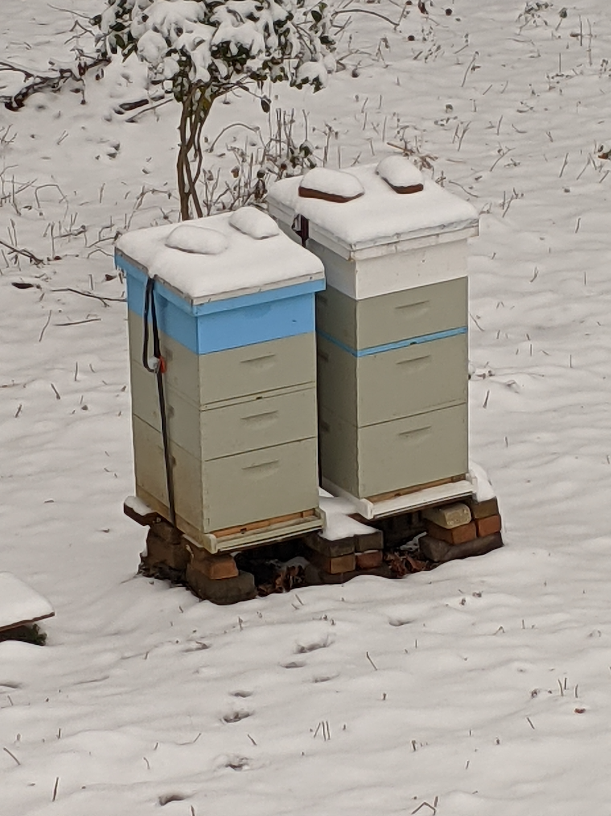
February 2021: Because the colonies are located near the Chesapeake Bay, there is not much snowfall. It's a pleasant sight to see snow-covered hives.
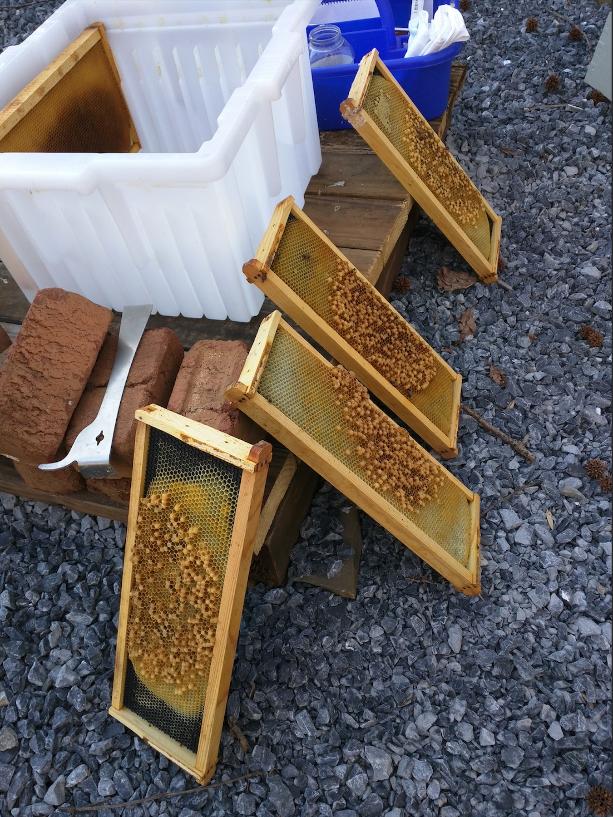
March 2021: I came out of winter with a laying-worker hive. I'm not sure when the queen was lost but I'm guessing it was at least 1-2 months prior to my first inspection. I couldn't do what one of my colleagues recommended (take the bees out 1/4 mile from my hives, shake em out, and the bees that fly back will not include the laying workers), because I just can't take getting rid of bees when I work so hard to manage them.....having said this.....this probably would have been a faster fix. First, I tried shaking all of the bees onto a plank in front of the hive, added a couple frames of eggs from another colony, and then let the bees walk back in. This indeed got rid of the laying worker(s) but in three weeks I still didn't see any signs of queen cells so then I took the two deep boxes, split them in half, and added each half to other strong colonies. Problem fixed. The frames of drone brood seen above, were placed in a freezer for 72 hours, then I 'uncapped' the brood and returned the frames to the strong hives for the bees to repair.
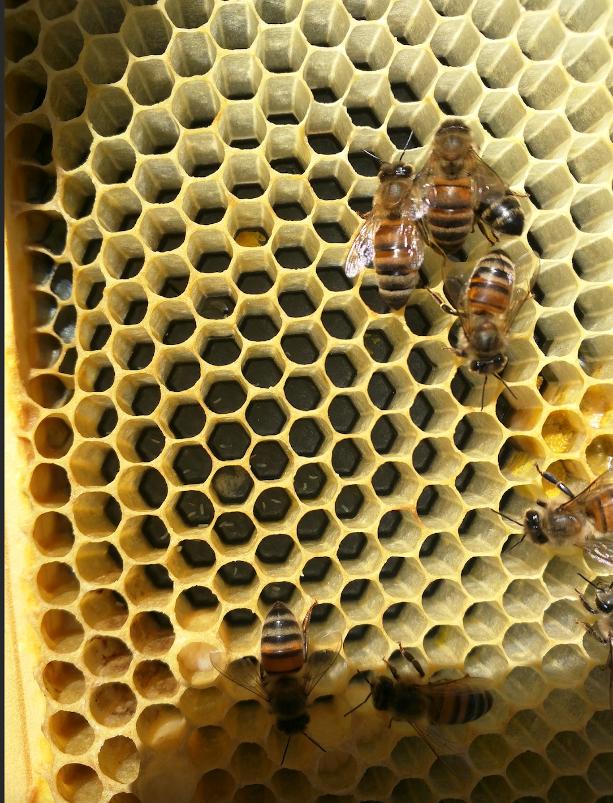
March 2021: laying-worker hive. Notice multiple eggs per cell.
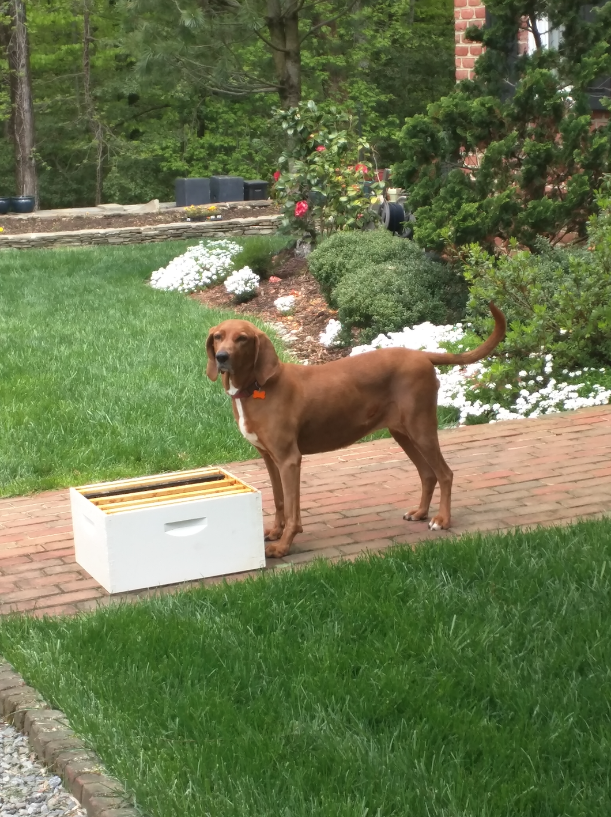
Zee is proud to watch over the bee boxes that will soon bee added to the hives.
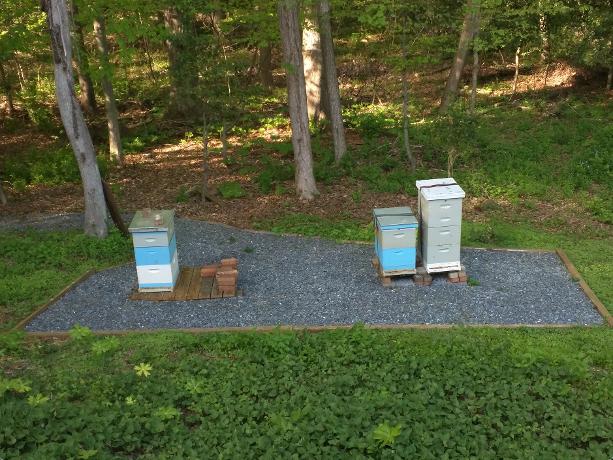
April 2021: A few hours of work during the cold months (before the bees are flying) to shovel some rock down and keep the wild from taking over the hives. So helpful!
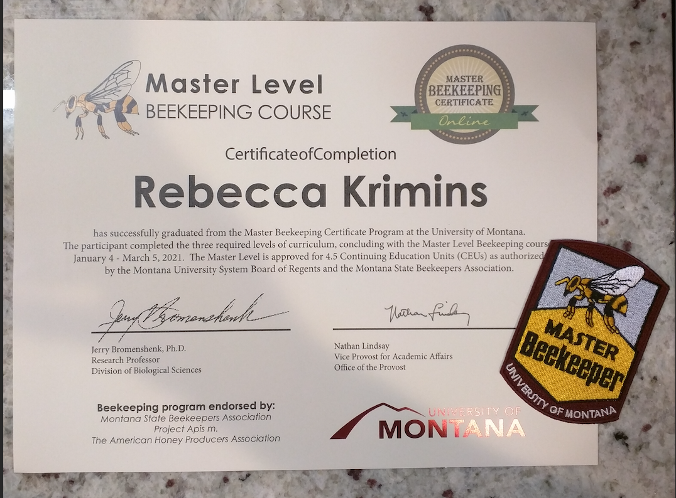
One good thing about the pandemic was that I was able to complete the University of Montana Master Beekeeper's Course. I am looking for a jacket for that patch and will wear it while I'm beekeeping! I highly recommend this course. Dr. Bromenshenk clearly understands teaching, beekeeping and has a deep love for what he does. He's made me a better beekeeper and corrected many of my false understandings.
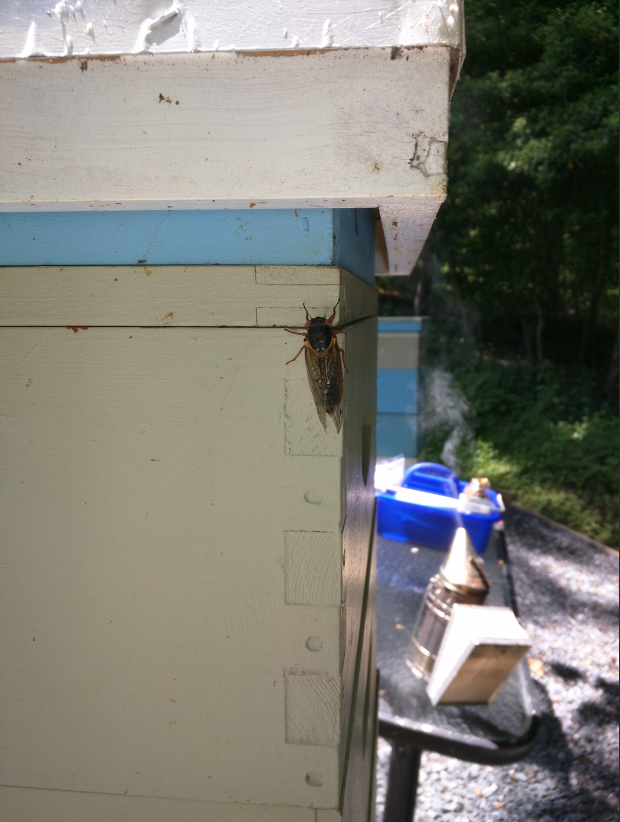
May 2021: Brood X has arrived!
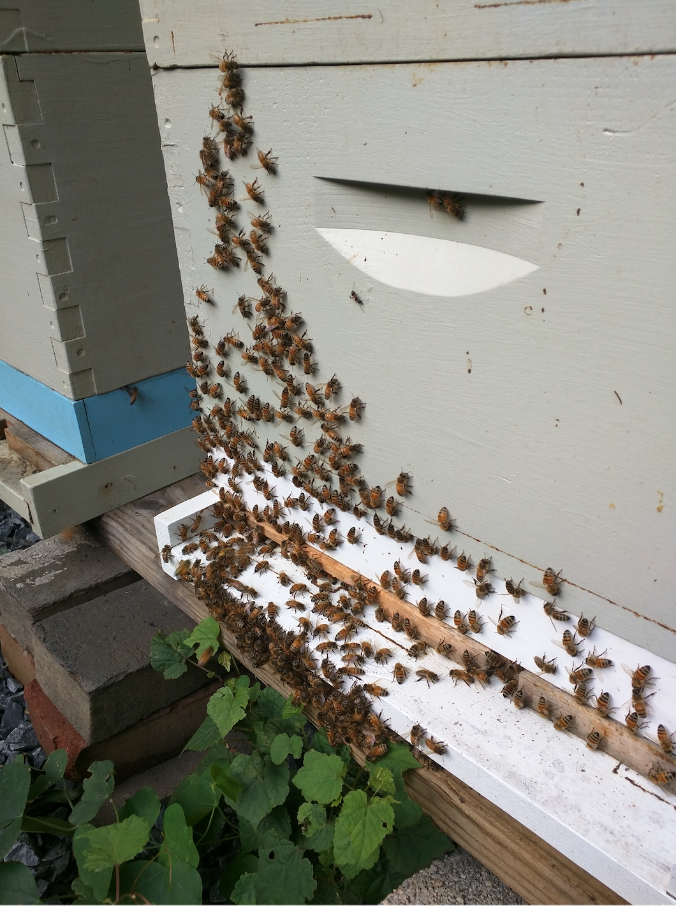
August 2021: It's August, these bees are washboarding and this is my busiest hive. The bee numbers seem to be growing every week. I extracted honey a few weeks ago and am concerned that the colony may get too crowded and swarm; I added a super back onto the hive and removed the queen excluder so the queen has plenty of room to lay. My other two colonies are bringing in pollen and appear to have started preparations for winter. I hear Bob Binnie's voice in the back of my mind reminding me that 'the beekeeping season starts in August'.
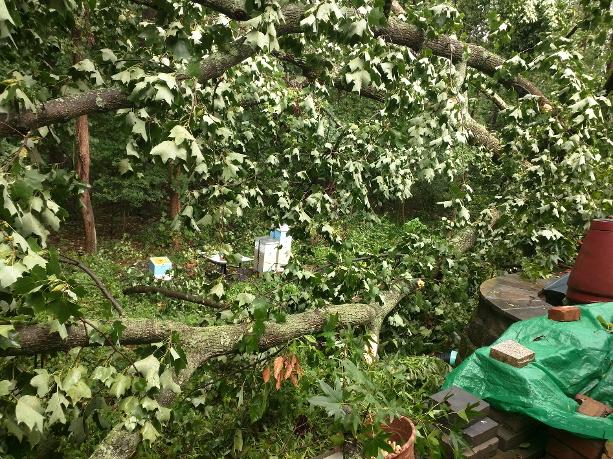
September 1, 2021: Hurricane Ida brought an EF-2 tornado through the property where my hives are located. I arrived about two hours after the tornado had passed. Two hives were untouched, one hive (the hive on the left) had the cover, shim and top box smashed by a large tree limb (I had been feeding the bees inside an empty box). It was pouring outside; I put on my bee suit and went down to help the hive, saw a bunch of dead/soaked bees on top of the inner cover (which was fortunately, still in place) and took a new telescoping cover and placed it on the hive. Hopefully this colony will survive.
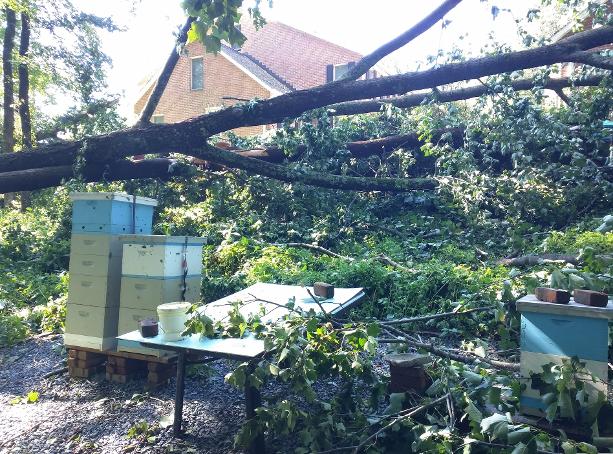
September 2, 2021: Wooden beehives are no match for Mother Nature. These colonies were very lucky they didn't get annihilated by those large poplar trees. Something we noticed: the tall sycamore trees appeared to stay standing while the poplar and gum ball trees were snapped and uprooted. The sycamore trees must have a root system that is much deeper than the poplars.
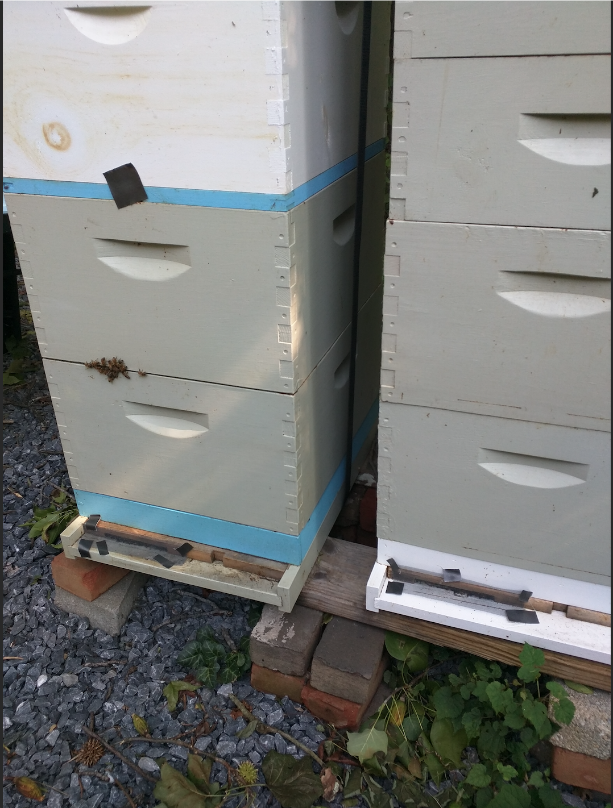
September 3, 2021: A professional tree company was hired to remove all of the fallen trees on the property. The manager came by to inspect the area and informed me that he'd be bringing in a crane the next day. He asked me if I could prevent the bees from flying while his team worked to remove the nearby trees; he understood that the hives were important to us and I greatly appreciated his kindness for the bees. I called my mentor for advice who told me to return to the hives at dusk that night, and place wire screen across the entrance reducers (emphasizing NOT to use the flexible/vinyl screens that are popular these days.....as the bees can chew right through that material). I had an old metal screen laying around, cut strips out and fastened each piece to the hive with duct tape. It worked great; the tree crew came in the next day and could work around the fallen trees without thousands of bees buzzing around. I removed the screens < 24 hours after placing them on the hives and was thankful that it wasn't too hot that day. Notice the stragglers on the left hive......these were likely bees that were still out foraging when I placed the screen.
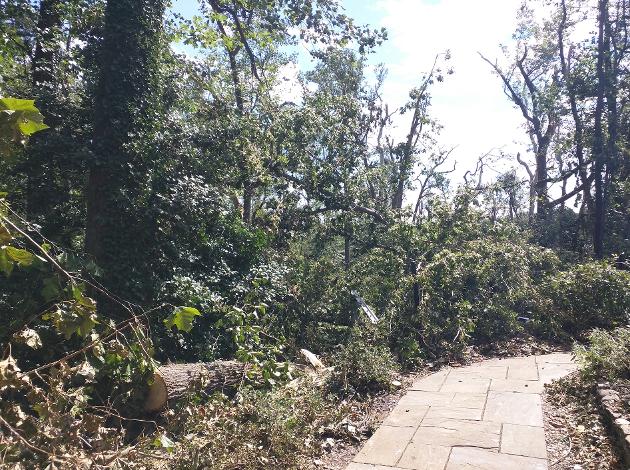
September 2021: To every tragedy there is a bright side. Although the property and structures on it were severely damaged during the tornado, fortunately nobody was hurt. Do you see that patch of open sky in the photograph? That's the direction the tornado traveled. Huge trees used to cover this area with a canopy of foliage. The thousands of downed trees will allow increased amounts ofsunlight to reach the hives.
©Copyright ZeesBees.com 2019-2024